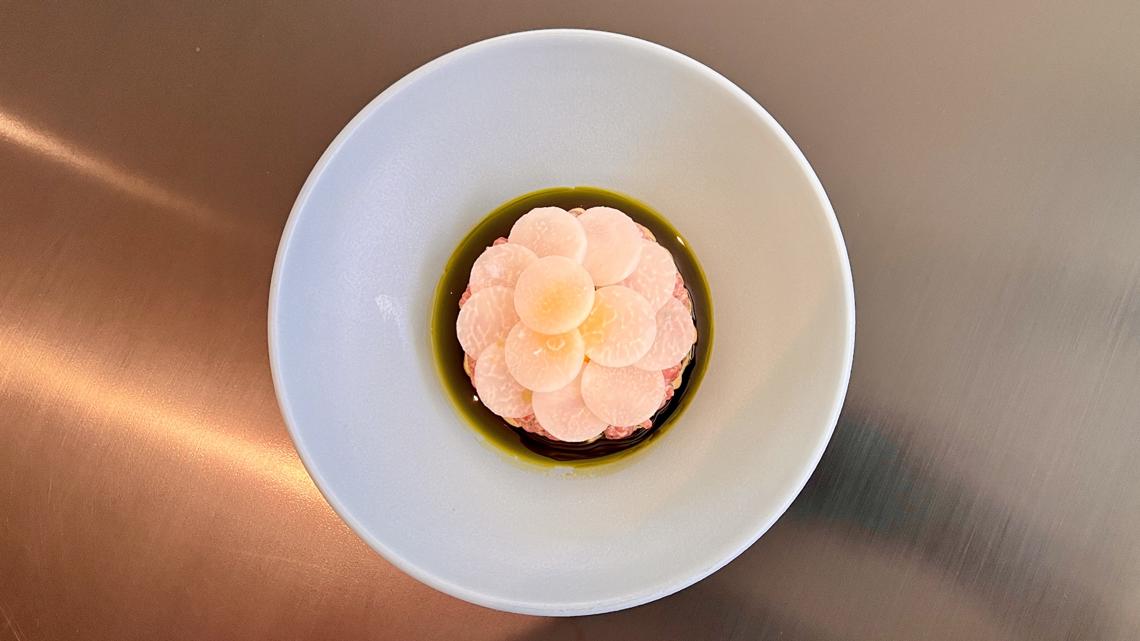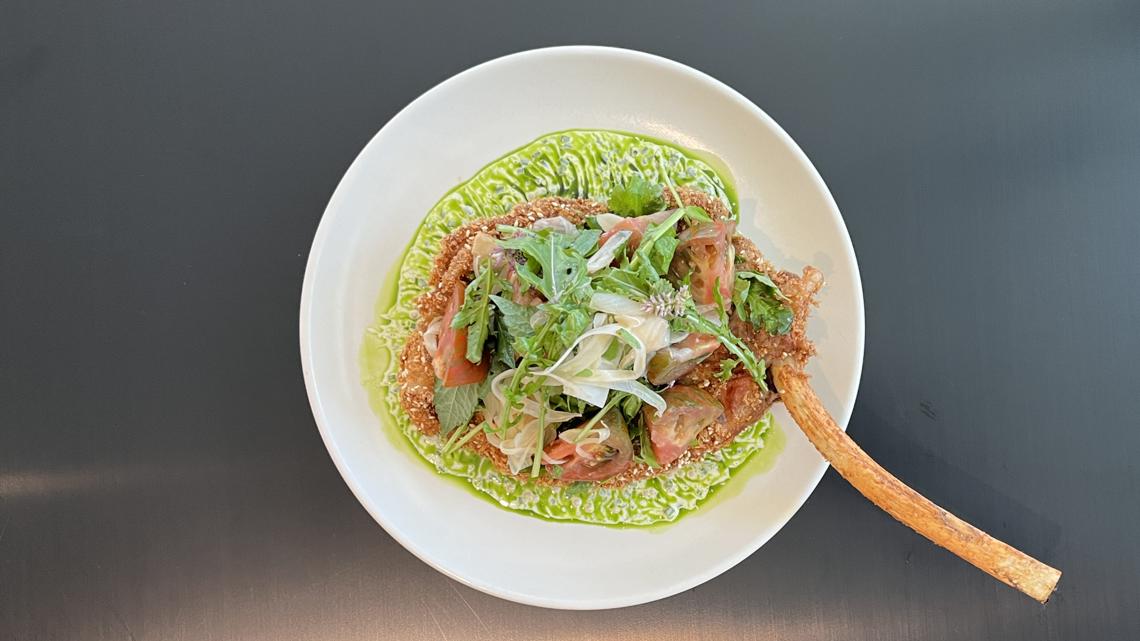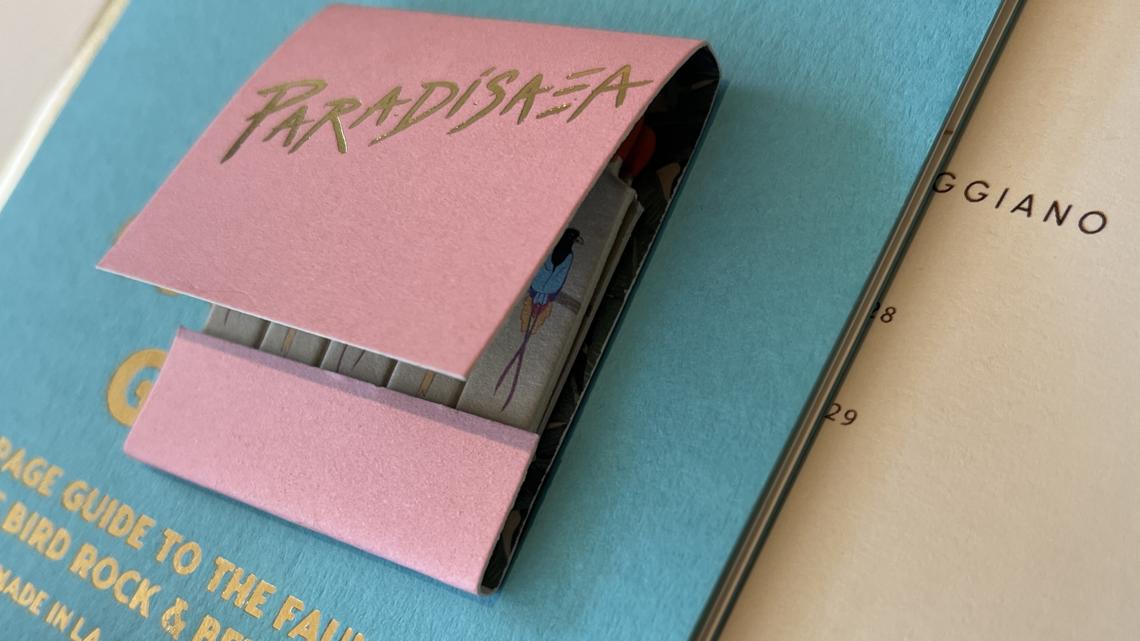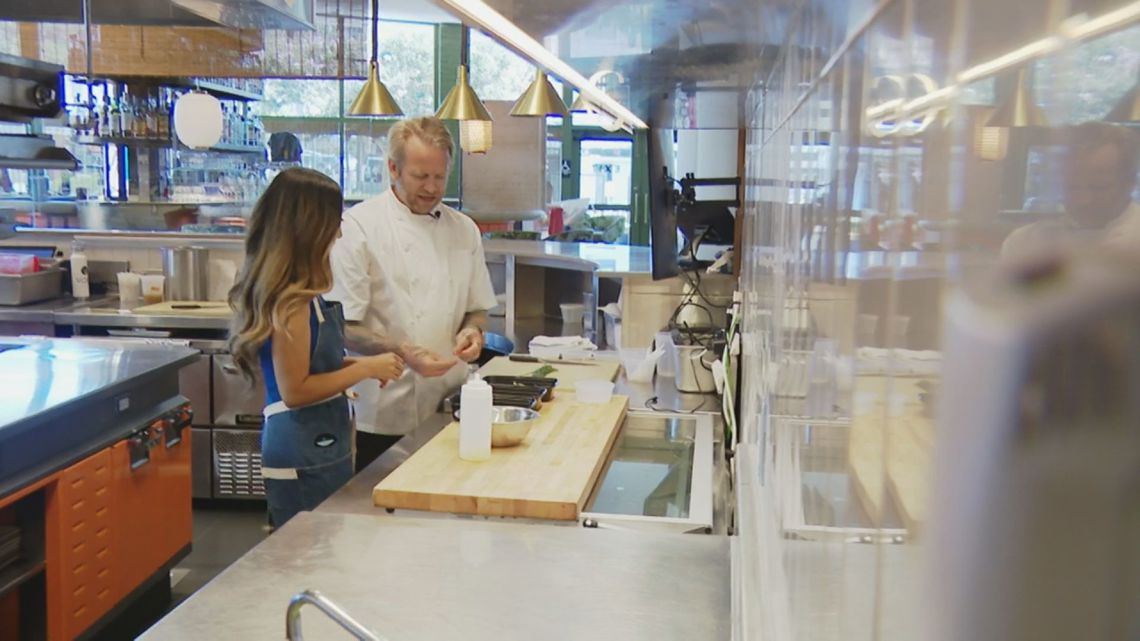SAN DIEGO — Inside the historic "Piano Building" at La Jolla Boulevard and Bird Rock Avenue you will still hear music, though the keys now tell a different story.
Paradisaea, with its pink neon sign out front and its tropical design throughout the restaurant, has won awards for preserving the 1940s mid-century structure.
"If you look, there's not many straight lines in the building as a mid-century building," said Executive Chef Jeff Armstrong. "It's an iconic San Diego building."
And it's not just the bright intricate mural in the dining room that's pretty, the food is too.
"I think the food scene is really evolving [in San Diego], there's a lot of great things going on in the restaurant world here," said Chef Armstrong.
He brought out the Grass Fed Beef Tartar. The silky smooth meat coupled with the remoulade and crunchiness of the pickled Kohlrabi was incredible.


The next dish, the Hokkaido Scallops with a roasted corn salad, crispy shallots, corn, lemongrass emulsion and chili caramel was my favorite.
The Veal Milanese was crusted in sesame seeds and panko after marinating overnight in a garlic, black pepper, mustard blend. A beautiful sauce was poured as it was served.
"It's like a buttermilk ranch sauce, pickled mustard seeds, fresh herbs, and then it's garnished with a little bit of chive oil," said Chef Armstrong.


Chef Armstrong said the menu complements the elegant, luxurious, yet approachable atmosphere.
"Familiar ingredients, but kind of elevate the technique." he said.
Paradisaea is the genus name for six species of Birds-of Paradise. Every cocktail on the menu is named after one of them. The attention to detail even extends to the artwork inside the little matchbooks.


"I think every chef and restaurateur is trying to create memories that connect with emotions," said Chef Armstrong. "And that's what we really try to do with the food here."
Career path
Chef Armstrong's culinary career began decades ago.
"When I was 14, I got a job at Little Caesar's Pizza and so I was making pizzas and pies and throwing them around. What I think attracted me to being a chef and the industry was the people. The hours at work, it was at night, you could see people's faces, they were happy, they had gratitude," he said.
He went on to work in other restaurants in different parts of the country, where chefs took him under their wing. He then chose to attend culinary school.
"I think there's some skill and some natural abilities to it, but I also think it's who you know, what you know, and what you're willing to learn," he said.
He went on to work in prestigious kitchens all over the world.
Chef Armstong grew up near Washington, D.C. His father was an engineer in the military. His mother was a nurse. He spent summers at his great grandparents' garden and feed store in North Carolina.
For him, the farm to table concept is simple.
"What my great-grandma cooked on the plate was what we farmed during the day. If we needed okra, I went and picked okra," he said.
"There's something magical about picking it and eating it," he added. "It's like you're completing the food cycle and the chain if you will."
In the kitchen
In the kitchen, he showed me how they peel fava beans. They have to peel about five pounds of fava beans per day.
"It's kind of therapeutic," he laughed.


Teaching is a big part of what he does.
"I would love for people to come out of the kitchens I run to be great chefs, and that's what makes me proudest," he said.
"I think there's a lot of great cooks out there, but are there great chefs? A chef is a teacher, a mentor, someone who passes that torch on, and that's important to me," said Chef Armstrong.
WATCH RELATED: Michelin Chef Drew Deckman says 31ThirtyOne in North Park is a celebration of fresh ingredients

